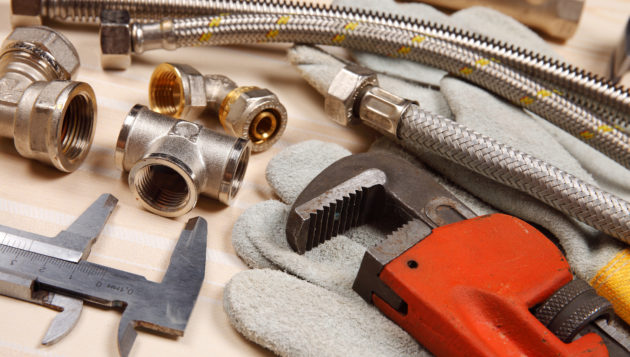How do you feel in regards to How to Prevent Frozen Pipes?

All homeowners who reside in pleasant climates need to do their ideal to winterize their pipes. It is something you should do throughout fall prior to deep winter season absolutely starts. Failing to do so can lead to calamity like icy, fractured, or ruptured pipes. Below are some convenient winterizing hacks to keep your plumbing system shielded even if the weather condition exterior is frightful.
Try a Hair Clothes Dryer or Heat Gun
When your pipelines are practically freezing, your dependable hair dryer or heat gun is a blessing. Bowling warm air straight into them may assist if the warm towels do not aid displace any working out ice in your pipelines. Do not use other objects that create direct flames like a strike torch. This can cause a larger calamity that you can not regulate. You might wind up destructive your pipelines while trying to melt the ice. And in the long run, you may even end up melting your residence. So be careful!
Open Cabinet Doors Hiding Plumbing
When it's chilly outside, it would be handy to open up cabinet doors that are concealing your pipelines. Doing this little trick can maintain your pipelines warm and restrict the possibly hazardous outcomes of freezing temperature levels.
Take Some Time to Wrap Exposed Piping
One simple and also clever hack to warm up cold pipes is to cover them with warm towels. You can cover them first with towels. After safeguarding them in place, you can put boiling water on the towels. Do it slowly to allow the towels absorb the fluid. You can also use pre-soaked towels in hot water, simply don't fail to remember to wear safety handwear covers to protect your hands from the heat.
Turn On the Faucets
When the temperature level drops as well as it seems as if the icy temperature will last, it will certainly help to switch on your water both inside and outdoors. This will certainly keep the water streaming with your plumbing systems. In addition, the motion will certainly reduce the freezing process. Especially, there's no need to turn it on full force. You'll wind up squandering gallons of water in this manner. Rather, aim for regarding 5 declines per minute.
When Pipes are Frozen, shut Off Water
Shut off the primary water shutoff immediately if you discover that your pipes are totally frozen or nearly nearing that phase. You will generally find this in your basement or utility room near the heating system or the front wall surface closest to the street. Transform it off today to stop additional damages.
With more water, more ice will certainly load up, which will ultimately lead to burst pipes. If you are unclear regarding the state of your pipes this winter, it is best to call a specialist plumber for an assessment.
All property owners that live in pleasant environments should do their ideal to winterize their pipelines. Failure to do so can lead to catastrophe like frozen, broken, or burst pipes. If the warm towels do not assist dislodge any kind of clearing up ice in your pipes, bowling warm air directly right into them may help. Transform off the main water shutoff immediately if you see that your pipes are completely icy or almost nearing that phase. With more water, even more ice will certainly pile up, which will at some point lead to rupture pipelines.
PREVENT YOUR PIPES FROM FREEZING THIS WINTER
A Leading Cause of Property Damage
When the weather is taking a deep nose dive into the cold dreary days, the risk of your pipes freezing and potentially bursting skyrockets. Unfortunately, during these cold dreary months, burst pipes are the most common denominator for property damage. The pipes that are most at the risk are those that are in areas where it is most cold in your home. For instance, pipes located in interior places such as basements, attics, and your garage. Unfortunately, that doesn’t mean that the pipes running through your cabinets or exterior walls can’t freeze. Good news, however, is that you can do things to help prevent pipes from freezing.
How to Prevent Pipes From Freezing
Once the temperature starts to drop during the winter, you should be taking the proper measures needed to ensure that your pipes stay warm and that there is circulation of water through them. Some steps that experts may recommend could go against your better judgement when it comes to saving water and heat. However, it would go without saying that when expenses are compared, damaged pipes could put a bigger dent in your wallet than a water bill.
What Can I Do?
- Keep your garage door closed. This is very important, especially if you have water supply lines running through your garage.
- Open your kitchen and bathroom cabinets to allow warm air to circulate through them.
- Allow air circulation throughout your home. Keeping the interior doors open will once again allow the warm air to circulate inside your home.
- Ensure your thermostat is running the same temperature throughout the night and day.
- If you plan to be away from home during the cold months, set your temperature no lower than 55° F. This should provide enough heat to keep the pipes warm and prevent any remaining water inside the pipes from freezing.
- For more of a long-term solution, add insulation to attics, basement, and other crawl spaces around your home.
- By allowing your faucet to drip, it will alleviate pressure in the system. This is important because the pressure that is created between the blockage and the faucet can potentially cause the pipes to burst. Allowing the faucet to drip will prevent the pressure from building up, therefore keeping the pipes from bursting.
- Seal any cracks, openings, and crawl spaces around your home to prevent cold air from coming inside. This keeps your pipes-not to mention your home-warmer and less susceptible to issues caused by freezing temperatures.
- For the pipes in your home that are easily accessible, applying electrical tape to them might prevent them from freezing over. This is a quick fix, as you can apply the tape directly to the pipe. There are two options for heating tapes. One turns on and off by itself when it senses heat is needed. The other type of heating tape needs to be applied when heat is needed and removed when not necessary. If you have exposed pipes in your home, you can check this website to take a look at a few options that would be available at a shop near you.

Hopefully you enjoyed our excerpt on Winterizing Your Pipes. Thanks for taking the time to read through our posting. Sharing is caring. You won't know, you could be doing someone a favor. Thank-you for going through it.
Find Out More
Comments on “Ultimate Guide to Winterizing Pipes: 5 Hacks to Prevent Bursting in Cold Climates”